“A rare example of construction using packed – rammed earthen walls…”
City Directories and History: (Anderson House)
Stateburg derives part its historical significance from its connection with Revolutionary Gen, Thomas Sumter, who founded (1783, if not earlier) and named it in hopes that it would be chosen new state capital. It missed this distinction in 1786 by only a few votes. The town was also the site of much Revolutionary War activity–Sumter’s home was destroyed by Col. Tarleton and both Generals Cornwall is and Greene camped in the Stateburg area. Although original plans to construct water transportation routes to facilitate trade with other parts of the state never materialized. Stateburg developed into an important South Carolina antebellum residential area. From 1783 to 1800 it was county seat for Claremont County, and until the Civil War, was a thriving town. (SC Dept. of Archives and History)
Built ca. 1758, the Borough House, Stateburg’s oldest extant building, is significant architecturally because it and its dependencies form the
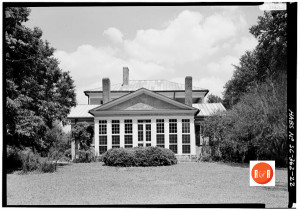
Images(s) and information from: The Library of Congress – HABS Photo Collection
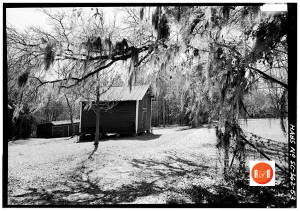
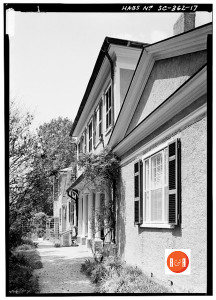 largest complex in the United States of pise de terre (rammed earth) buildings. This material, a Spanish and French type of construction, is essentially hand-poured clay. The Classical Revival home’s beams are of heart pine, some 50 feet long, adze-hewn and pegged. The laths on the inside of the pise de terre walls are hand-hewn and secured with three-inch hand-forged square-topped nails. The base coat of plaster is over laths mixed with binding of rabbit fur. In 1821 the present pise de terre wings were added, in addition to the colonnaded one-story back porch with two bedrooms above and the second-story porch on the front. Pise de terre outbuildings include a two-roomed library with hipped roof and Tuscan colonnade on all four sides, a dry well, a doctor’s office with a temple front with four columns, a loom house, a summer kitchen/dairy, and a slave cabin/cook’s quarters. According to tradition, the Borough House served as headquarters for General Cornwallis in 1780 while he established a series of forts in the Wateree Valley. General Nathanael Greene and some Continental Army soldiers occupied the house in 1781. Dr. William W. Anderson, who redesigned the house in 1821, performed the first successful operation for removal of cancer of the jawbone here in 1829. On its grounds the state’s first tree farm was established in the early 1900s. Listed in the National Register March 23, 1972; Designated a National Historic Landmark June 7, 1988. [Courtesy of the SC Dept. of Archives and History]
largest complex in the United States of pise de terre (rammed earth) buildings. This material, a Spanish and French type of construction, is essentially hand-poured clay. The Classical Revival home’s beams are of heart pine, some 50 feet long, adze-hewn and pegged. The laths on the inside of the pise de terre walls are hand-hewn and secured with three-inch hand-forged square-topped nails. The base coat of plaster is over laths mixed with binding of rabbit fur. In 1821 the present pise de terre wings were added, in addition to the colonnaded one-story back porch with two bedrooms above and the second-story porch on the front. Pise de terre outbuildings include a two-roomed library with hipped roof and Tuscan colonnade on all four sides, a dry well, a doctor’s office with a temple front with four columns, a loom house, a summer kitchen/dairy, and a slave cabin/cook’s quarters. According to tradition, the Borough House served as headquarters for General Cornwallis in 1780 while he established a series of forts in the Wateree Valley. General Nathanael Greene and some Continental Army soldiers occupied the house in 1781. Dr. William W. Anderson, who redesigned the house in 1821, performed the first successful operation for removal of cancer of the jawbone here in 1829. On its grounds the state’s first tree farm was established in the early 1900s. Listed in the National Register March 23, 1972; Designated a National Historic Landmark June 7, 1988. [Courtesy of the SC Dept. of Archives and History]
Click here for the Stateburg Historic District information.
“Next on this old part of the road is Borough House so named because it was the only residence in the early village, or borough, of Stateburg when it was first laid out. Later the Ellison place was bought by James G. Simons. He sold it to the late Mrs. Virginia Saunders White (Mrs. Walter C.), former owner of the adjoining place, Borough House, which will be considered next. After Mrs. White’s death, her daughter, Martha White acquired it and is now in the process of restoring the house, which she will name later.
During Revolutionary times (1789) it was owned and occupied by the family of Mr. Thomas Hooper and his wife, Mary Jane McKenzie Hooper. Mr. and Mrs. Hooper adopted a niece, Mary Jane McKenzie, who married Dr. William Wallace Anderson, son of Col. Richard Anderson of Maryland who rendered distinguished service during the Revolutionary War. For many years it was known locally as the Anderson House; later its name was Hill Crest, but finally its original name was restored. Col. Anderson will be remembered as one of the heroes of the Battle of Camden. It seems that his glowing accounts of The High Hills of the Santee were responsible for his son locating in Stateburg. The Dr. William Wallace Anderson (1789-1864) who married Mary Jane McKenzie Hooper in 1818 had moved to Stateburg in 1810. It then became the property of his son, Dr. William Wallace Anderson, whom we shall designate as “Sr” because after the Confederate War there was another William Wallace Anderson, his first cousin, living in Stateburg who was known as “Jr.” Upon the death of Dr. W. W. Anderson, Sr., the Borough House passed into the hands of Ann Catherine Anderson Saunders (Mrs. W. L.). After her death it was owned by her daughter, Virginia Saunders White (Mrs. Walter C.). It is now owned by Mrs. White’s daughter, Mary White Anderson (Mrs. Richard K.). The residence complex, to use a modem term, is not all visible as one approaches the house. Nearer the road on the right can be seen a small building, used originally as the office (and apothecary shop) of one or both of the Dr. W. W. Andersons. On the left of the house is a small building of two rooms used at different times as a library, school room, and guest house, but now used as a library. Behind the house and not visible from the front were the kitchen, “dry well,” and loom house with loom still standing.
Most readers of this will have seen the house, or pictures of it in magazines and books, so I shall not attempt to describe it, but only to note one or two outstanding and interesting features. Probably its most arresting feature is the material of which it was built. It and the Church of the Holy Cross just across the road have often been used by architects as examples of Pise de terre (rammed earth). Although the garden was noted for its beauty, perhaps the visitor is more attracted to the lovely view through a vista in the garden at the back. This view can also be seen from the front porch entrance. When the subsequent owners had occasion to make repairs they used the original formula for this Pis de terre.
As one of the by-products of this historic house it is interesting to note that there were five first cousins either born there or lived there at one time for some reason who joined the Confederate army, four of them being officers: Gen. Richard H. Anderson, Dr. William Wallace Anderson, a brother, who became an Army surgeon, Capt. Edward McKenzie Anderson, and Dr. Franklin Anderson, one of the first cousins who became assistant surgeon in the 18th Mississippi Regiment. The other first cousin, Dr. William Wallace Anderson (known as “Jr” during his Stateburg residence) joined the Confederate Army with other S. C. College boys, and served as a courier for Generals Ewell and Anderson…..”
Information from: Names in South Carolina by C.H. Neuffer, Published by the S.C. Dept. of English, USC
“Anderson, Dr. William Wallace of “Borough House” on “Red Hill” plantation. Born Apr. 19, 1789 (Md.) ; married Jan. 30, 1818, Mary Jane Mackenzie (1789-Feb. 27, 1832), and Oct. 29, 1833, Elizabeth Waites (Feb. 27, 1788-Nov. 5, 1876); died May 10, 1864. Education: University of Pa., M.D., 1810. Church: Episcopalian (Vestryman, Church of the Holy Cross). Other: Trustee, Edgehill Academy; member, Societatis Americana Whiggensis, Societas Linnaena Philadelphiensis Scientae Naturalis Cultoribus, Societas Medica Philadelphiensis. Slaves: 149 (Sumter District).”
The Last Foray, C. Gaston Davidson, SC Press – 1971
Stay Connected
Explore history, houses, and stories across S.C. Your membership provides you with updates on regional topics, information on historic research, preservation, and monthly feature articles. But remember R&R wants to hear from you and assist in preserving your own family genealogy and memorabilia.
Visit the Southern Queries – Forum to receive assistance in answering questions, discuss genealogy, and enjoy exploring preservation topics with other members. Also listed are several history and genealogical researchers for hire.
User comments welcome — post at the bottom of this page.
Please enjoy this structure and all those listed in Roots and Recall. But remember each is private property. So view them from a distance or from a public area such as the sidewalk or public road.
Do you have information to share and preserve? Family, school, church, or other older photos and stories are welcome. Send them digitally through the “Share Your Story” link, so they too might be posted on Roots and Recall.
Thanks!
User comments always welcome - please post at the bottom of this page.
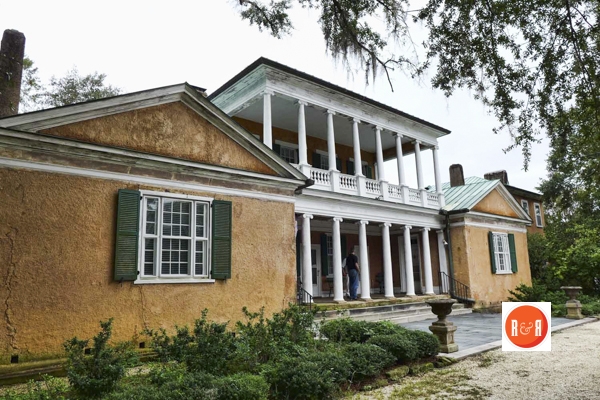
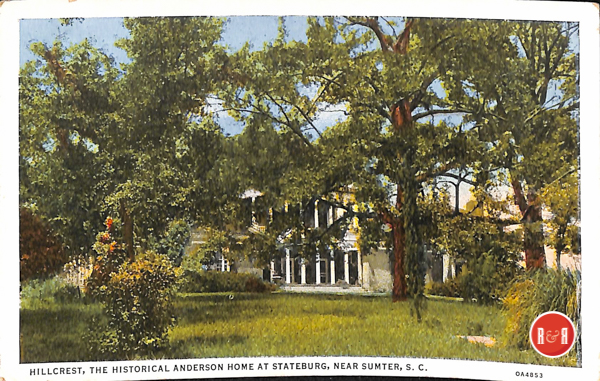
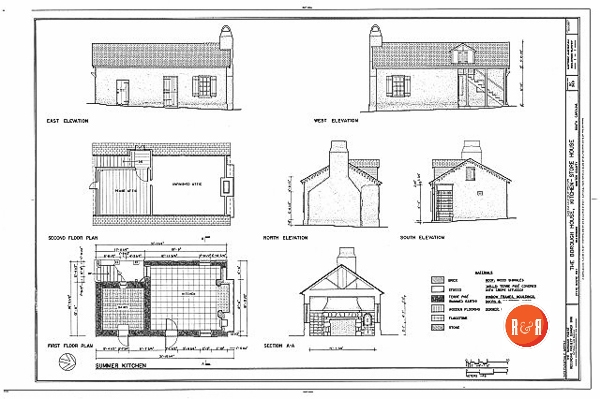
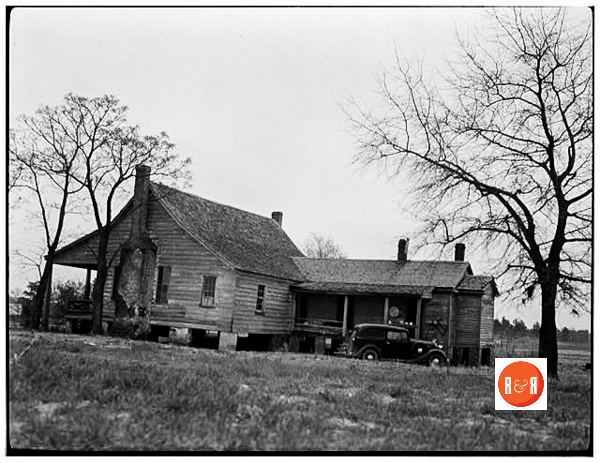
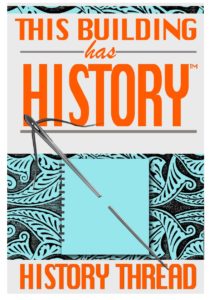

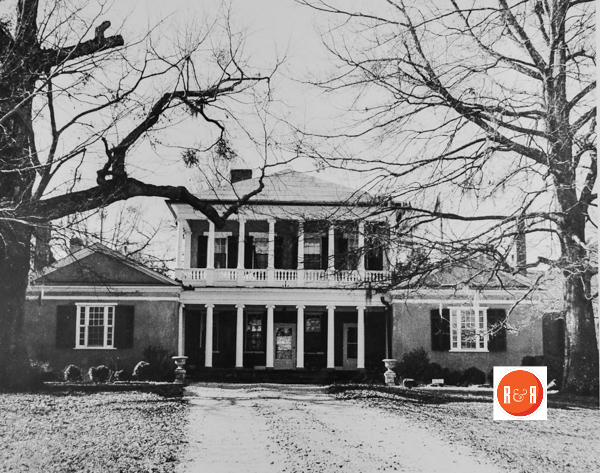


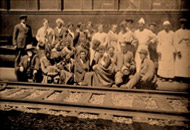
Share Your Comments & Feedback: